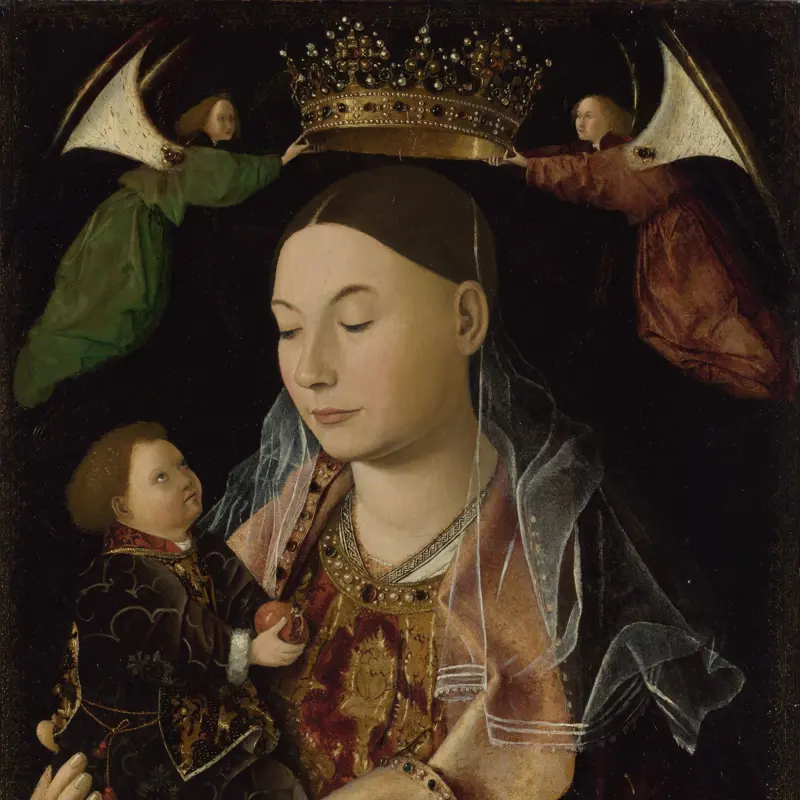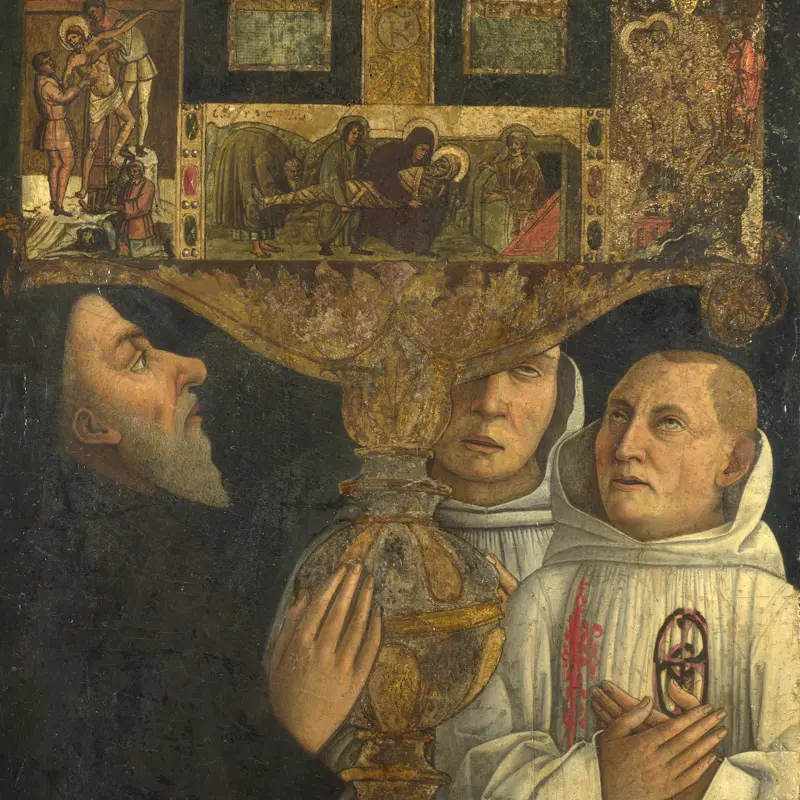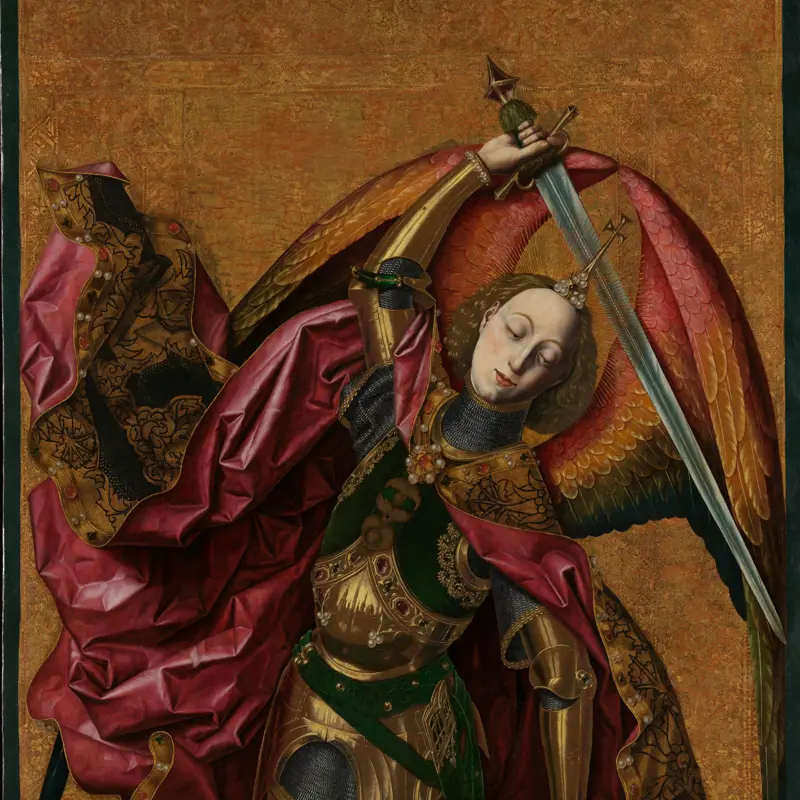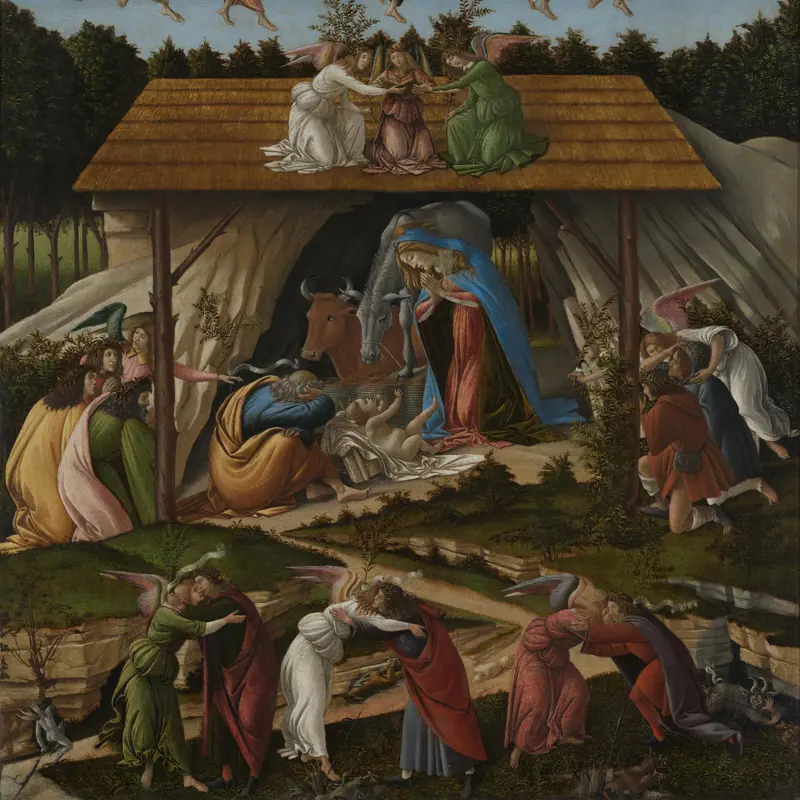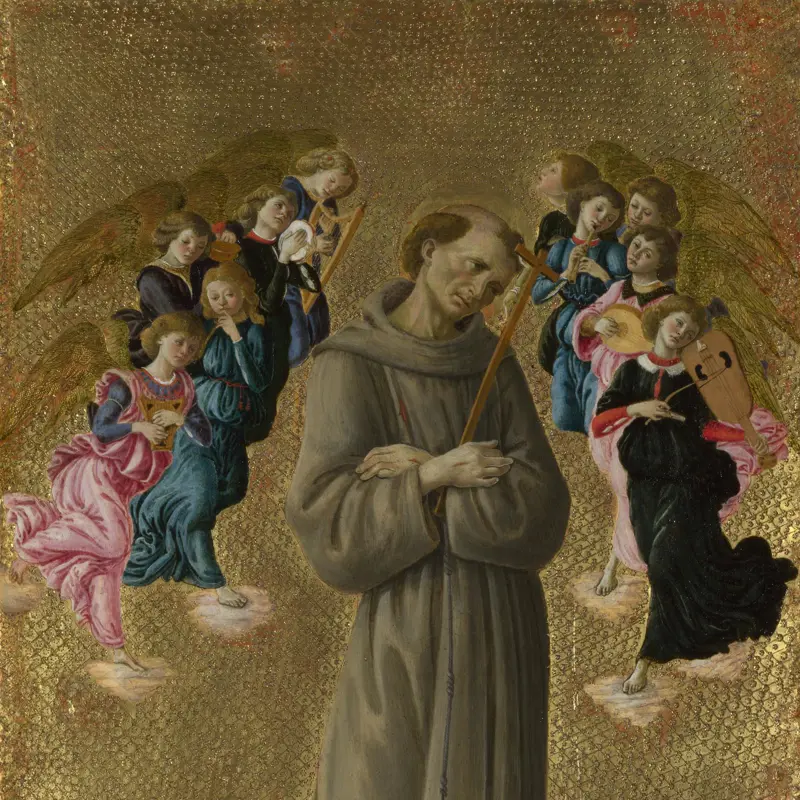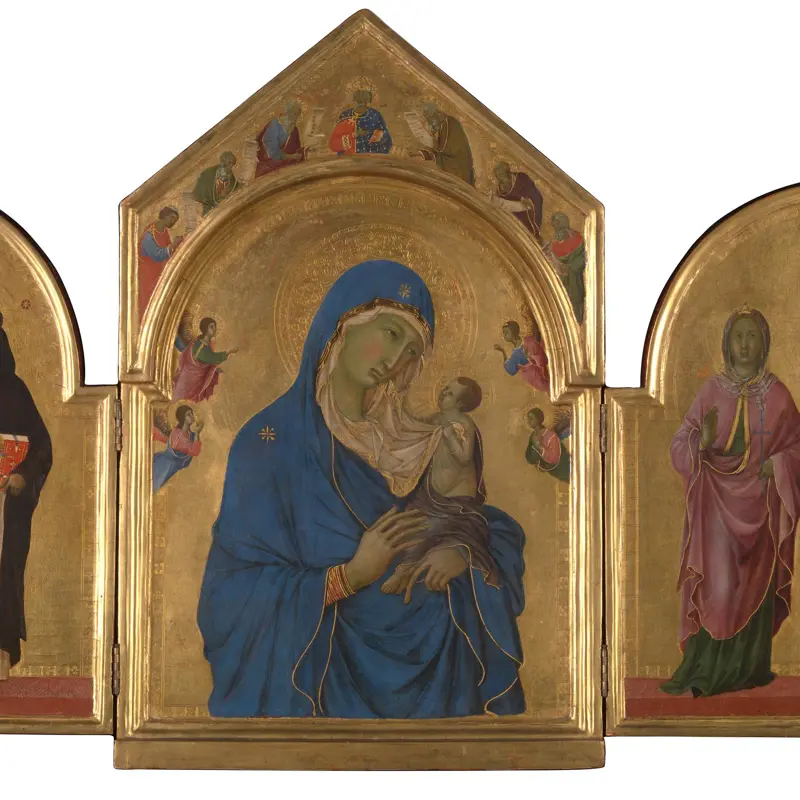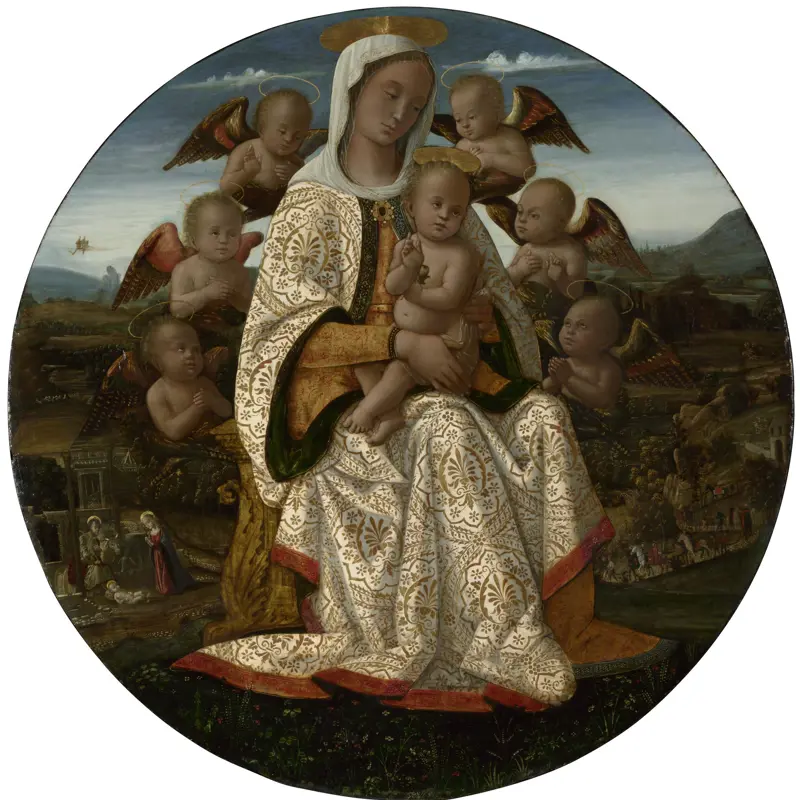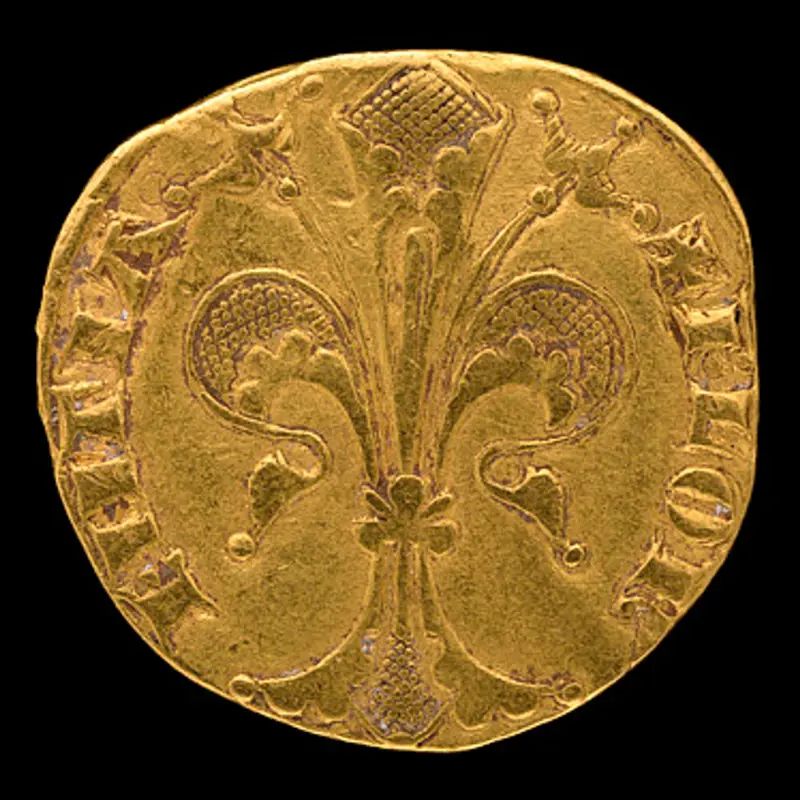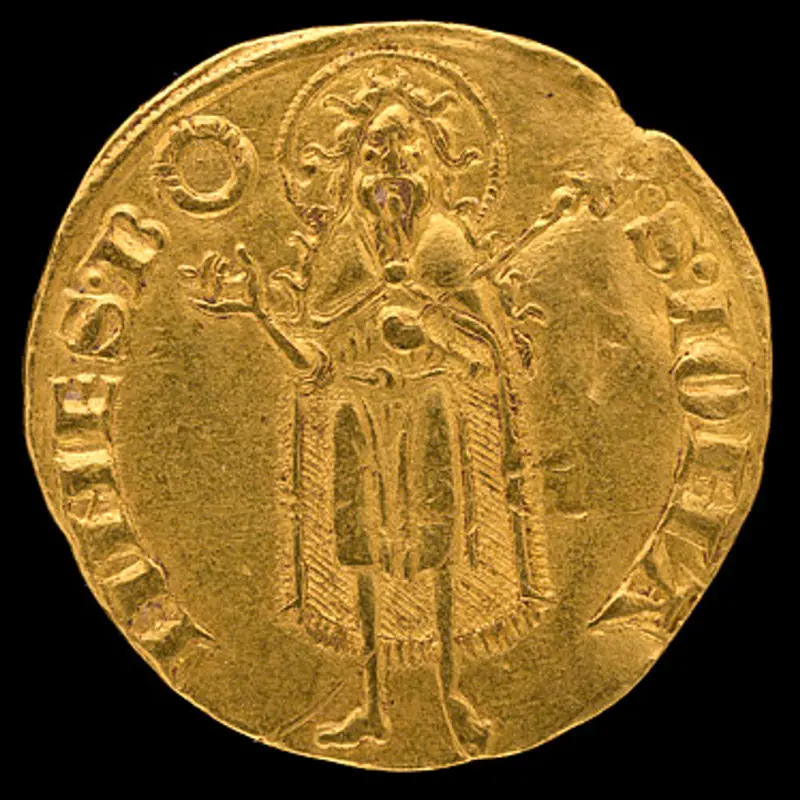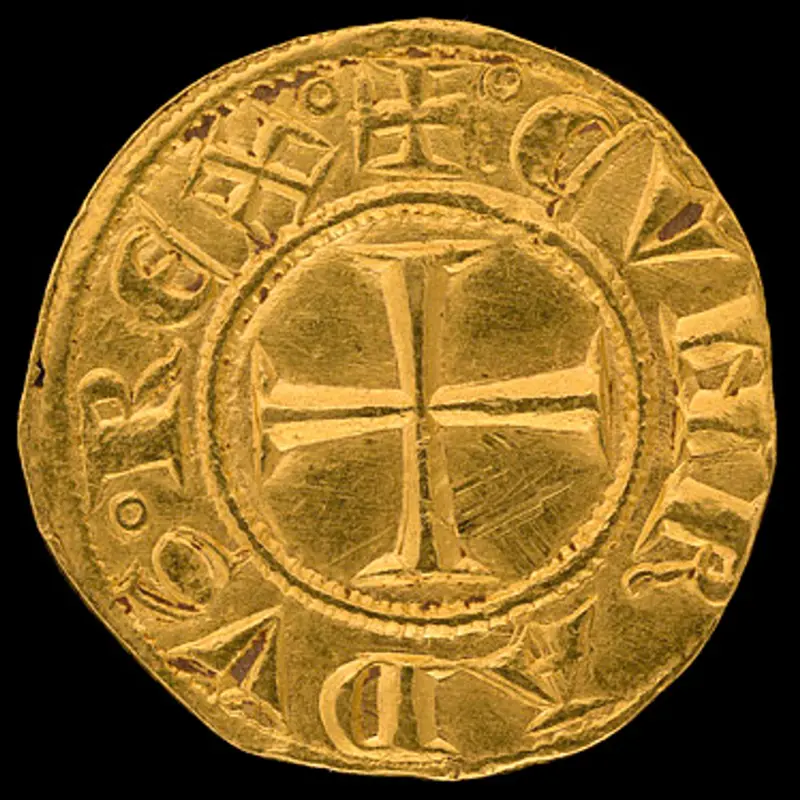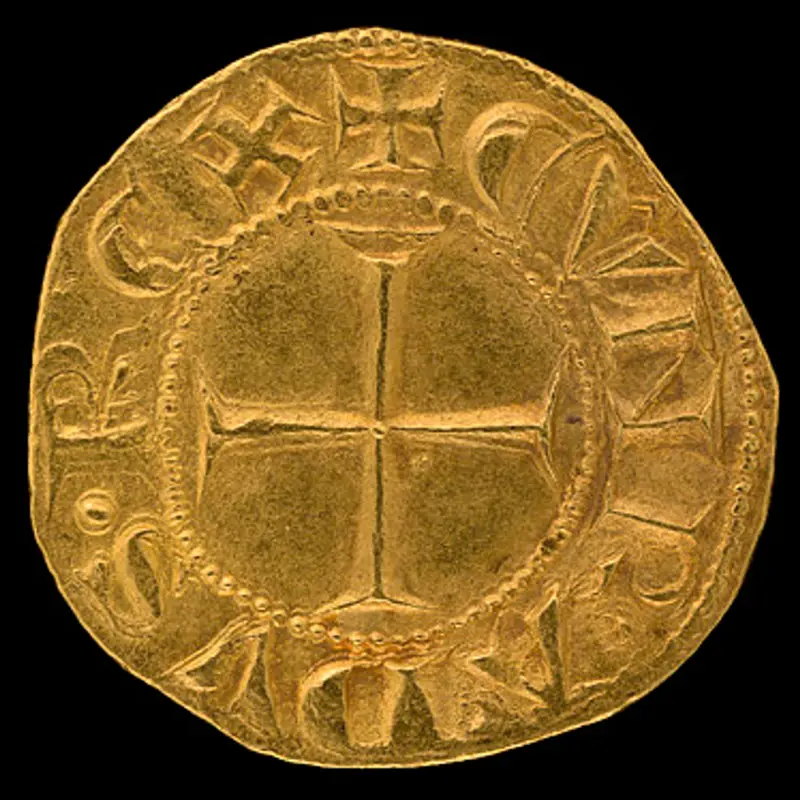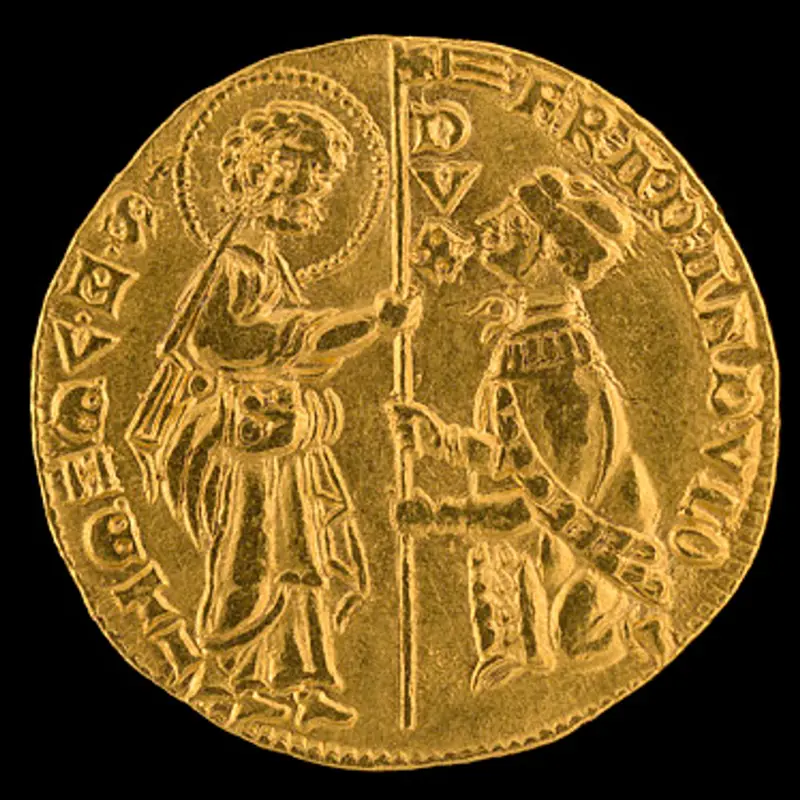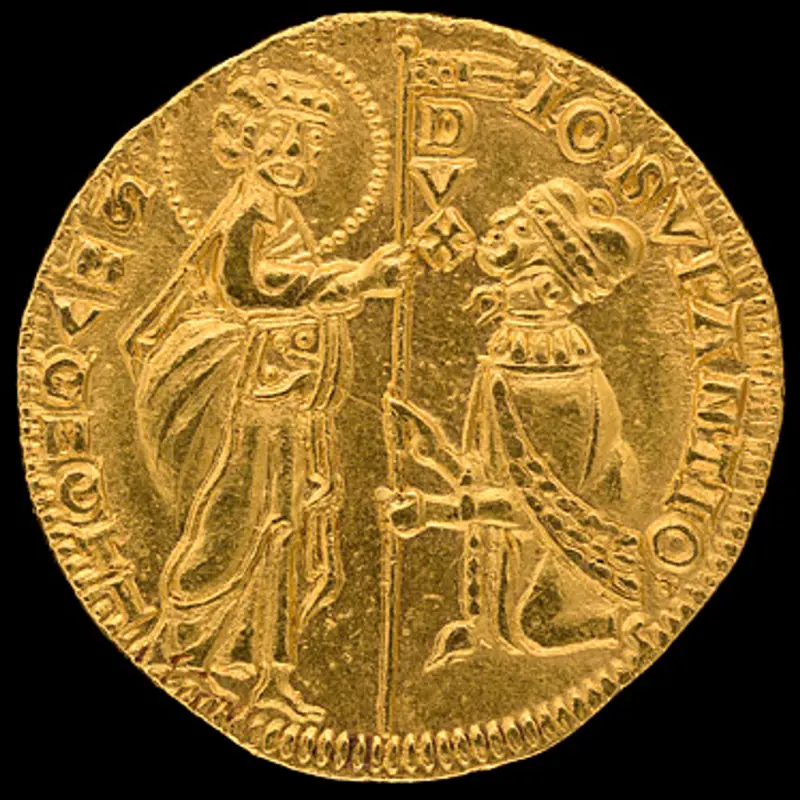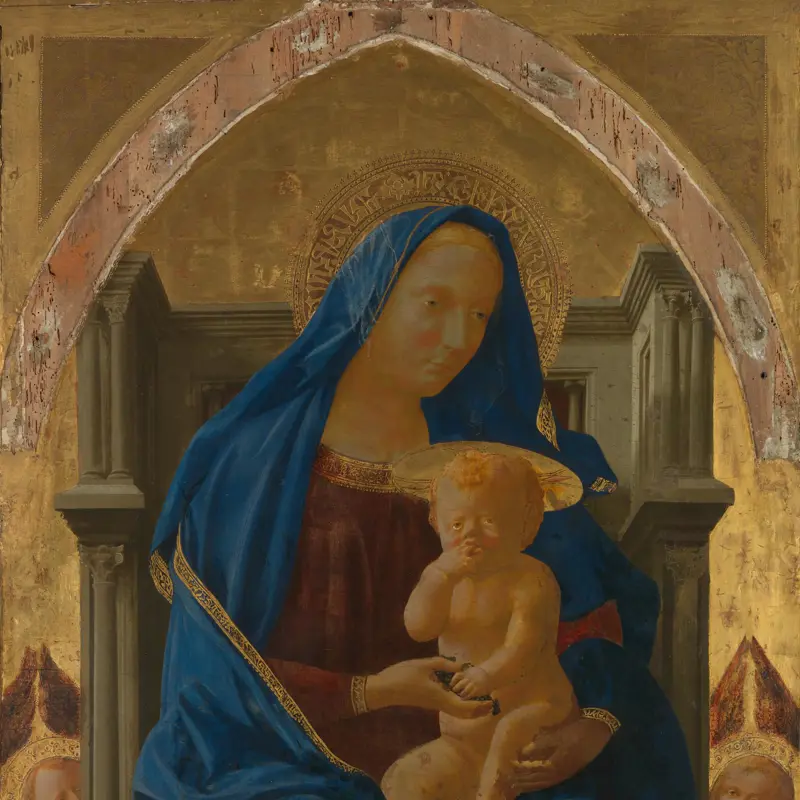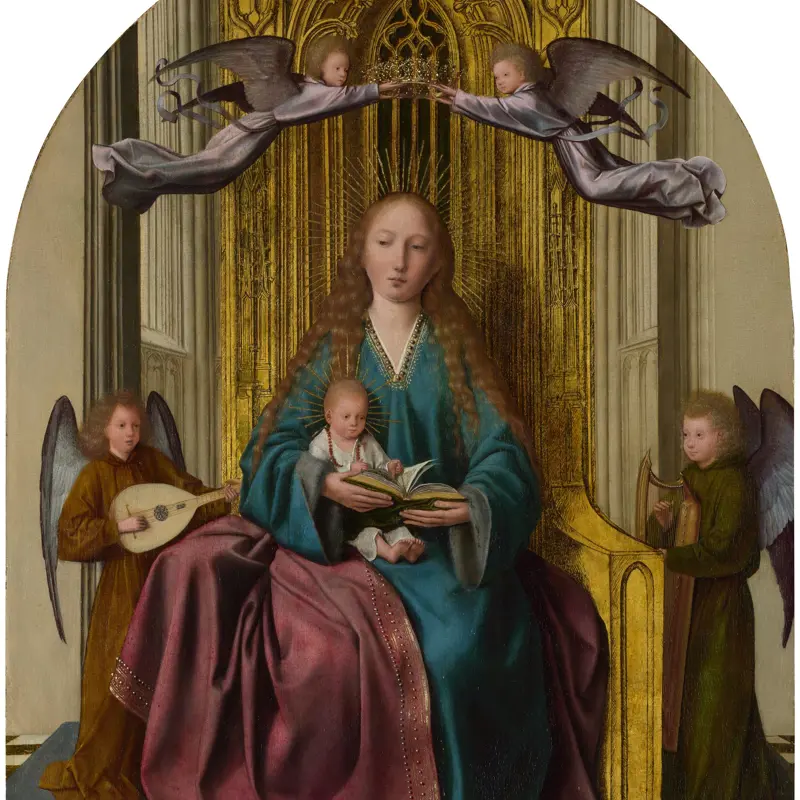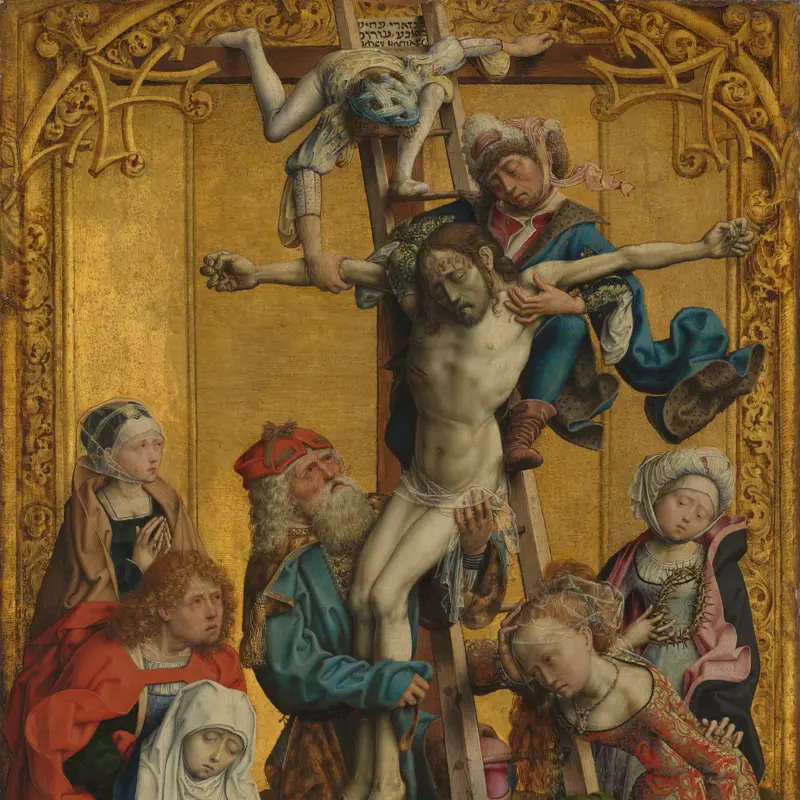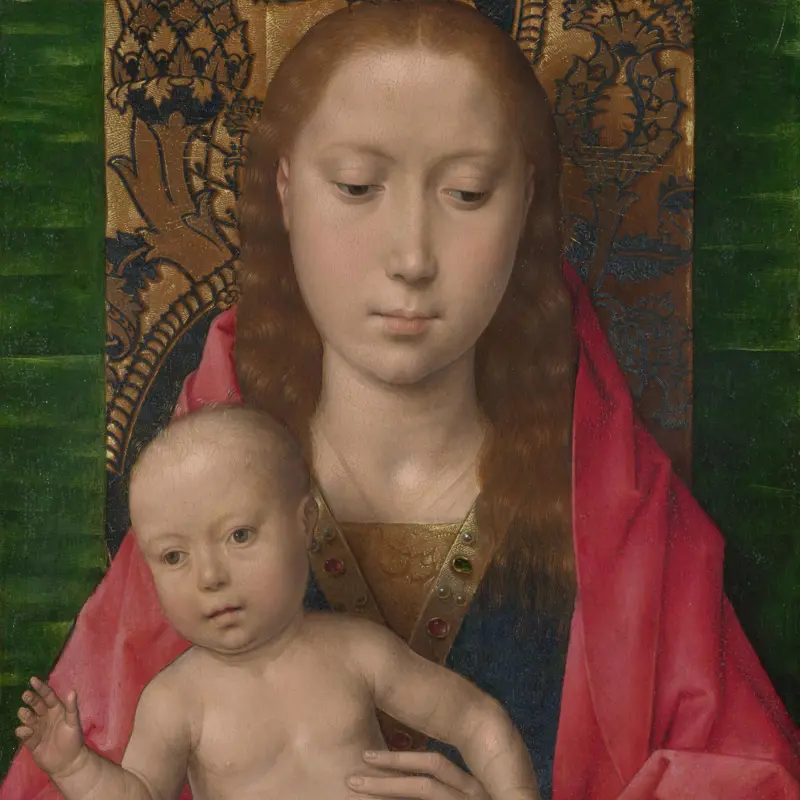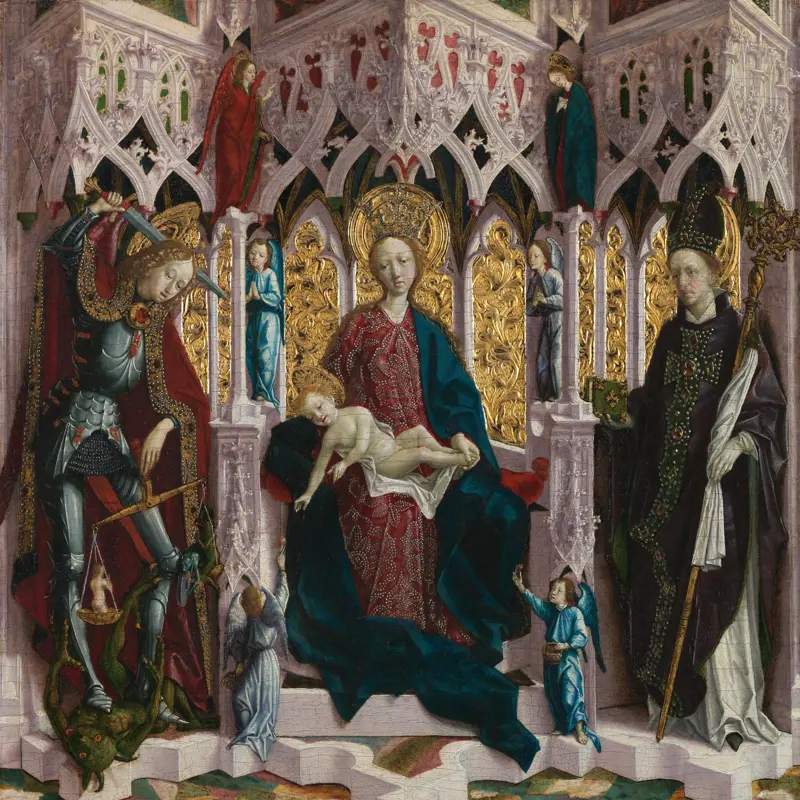In the Christian tradition, gold has long been associated with the divine. Its widespread use in panel paintings developed in line with the return to the gold standard in coinage for the first time since Antiquity. Florence, Venice and Genoa all minted their own gold coins in the 13th century.
The presence of gold in paintings evoked the timeless, spiritual significance of Christ, the Virgin and saints, and set these holy figures apart from our world. Gold's costliness and material splendour also added status and value to works of art. The use of gold on paintings deliberately evoked other types of objects, particularly the precious metalwork of shrines and reliquaries.
During the Renaissance, painters began to move away from using actual gold in their work. Nonetheless, the material’s sacred significance and visual richness continued to be important. Artists carried on using gold in representations of divine light or heavenly spaces. They also began to explore new ways of representing gold objects and metallic surfaces in paint. Gold, whether fictive or real, was used to express holiness, preciousness and prestige in Western painting well into the 16th century and beyond.


